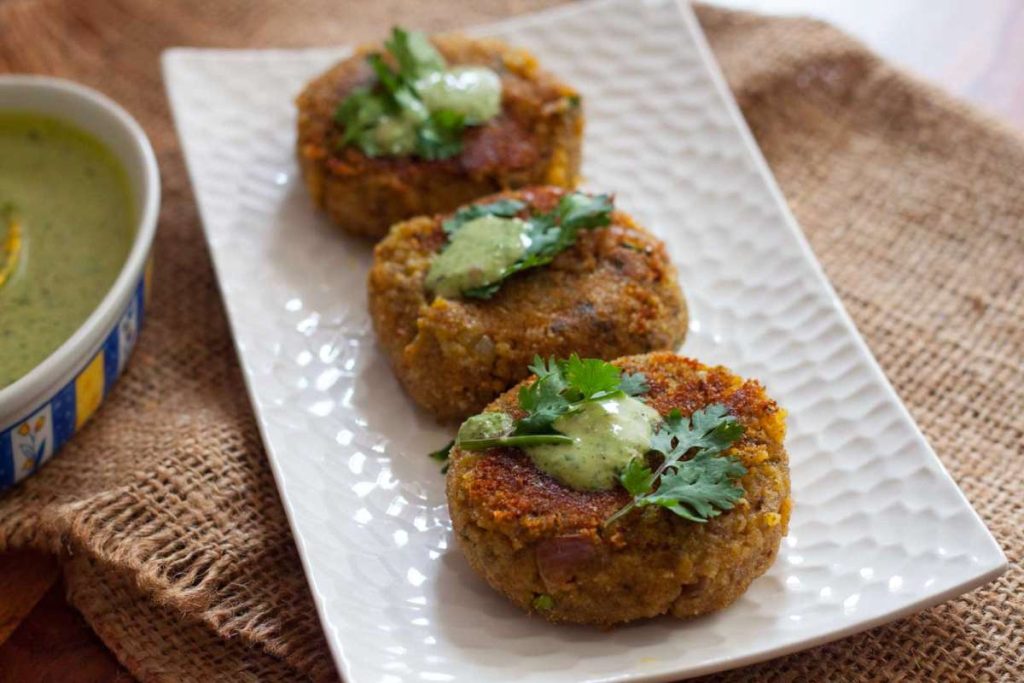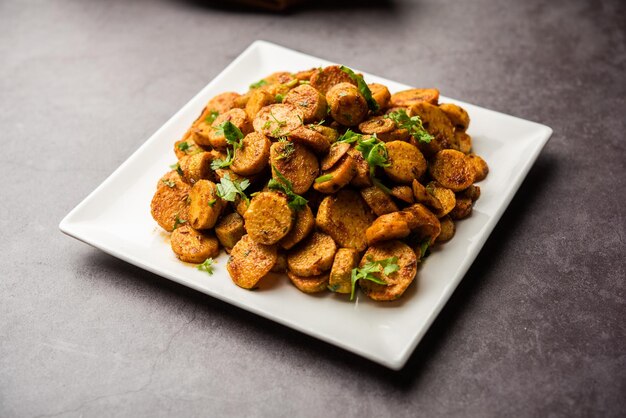By Lothungbeni Humtsoe
During the auspicious period of Navratri, devotees honour the divine feminine energy and engage in spiritual practices such as fasting, prayer, and meditation.
The Navratri meal suggestions shared with IANSlife by Dr. Hansaji, Director of The Yoga Institute and President of the Indian Yoga Association, not only conform to fasting traditions but also support a yogic lifestyle, boosting physical and mental well-being.
By including these Navratri meal options into your fasting schedule, you may tap into the transformational force of this sacred festival to strengthen your yoga path. These dishes not only honour history but also provide the nourishment required to power your inner light.

RAJGIRA THALIPEETH
ate the boiled sweet potatoes and chop fresh coriander leaves. Set them aside.
Make the Thalipeeth Dough:
In a mixing bowl, combine the Rajgira flour, grated sweet potatoes, chopped coriander leaves, cumin seeds, black pepper powder (if used), and Sendha Namak (rock salt).
Knead the mixture into smooth dough. You can add a little water if needed, but usually, the moisture from the potatoes is sufficient to form the dough.
Divide and Shape the Thalipeeth:
Partition the dough mixture into little divides and shape them into balls.
Take a plastic sheet of parchment paper and place one dough ball on it. Flatten it gently using your fingers to form a round, flatbread (Thalipeeth). You can wet your fingers slightly to prevent sticking.
Cook the Thalipeeth:
Heat a griddle or skillet over medium-high heat and add a little ghee or oil to grease it.
Carefully transfer the shaped Thalipeeth onto the hot griddle. You can use a plastic sheet or parchment paper to assist you in transferring it.
Cook until the bottom side turns golden brown and crispy, which takes about 2-3 minutes.
Flip the Thalipeeth and cook the other side until it’s golden brown and crisp. Drizzle more ghee or oil around the edges as needed.
Serve Hot:
Remove the Rajgira Thalipeeth from the griddle and serve hot with yogurt, Vrat ke aloo (potato curry), or any fasting chutney of your choice.
BARNYARD MILLET PATTIES
Ingredients:
1 cup barnyard millet (samak rice), cooked and cooled
2 medium-sized potatoes, boiled and mashed
¼ cup roasted peanuts, coarsely crushed
¼ cup fresh coriander leaves, finely chopped
Sendha namak (rock salt) to taste
½ tsp cumin seeds (jeera)
Ghee or oil for pan-frying
Instructions:
Prepare the Barnyard Millet:
Cook barnyard millet (samak rice) and let it cool completely.
Mix Ingredients:
In a mixing bowl, combine the cooked and cooled millet, mashed potatoes, crushed peanuts, finely chopped coriander leaves, Sendha Namak (rock salt), and cumin seeds (jeera).
Partition the dough mixture into little divides and shape them into balls.
Shape the Patties:
Divide the mixture into small portions and shape them into patties or tikki. You can adjust the size according to your preference.
Pan-Fry the Patties:
Heat a non-stick skillet or pan and add a little ghee or oil for shallow frying.
Place the millet patties in the hot pan and cook them on medium heat until they turn golden brown and crispy on both sides. You can drizzle a little ghee or oil around the edges for added flavor and crispiness.
Serve Hot:
Once the patties are cooked and crisp, remove them from the pan and place them on a paper towel to remove excess oil/ghee.
Serve the barnyard millet patties hot with yogurt or any fasting chutney of your choice.

ARBI SAUTE
Ingredients:
250 grams arbi (colocasia)
2-3 tbsp ghee or oil (use ghee for a sattvic option)
1 tsp cumin seeds (jeera)
½ tsp ajwain seeds (carom seeds)
Sendha namak (rock salt) to taste
½ tsp black pepper powder (optional)
½ tsp roasted cumin powder (optional)
Fresh coriander leaves for garnish
Instructions:
Prepare the Arbi:
Wash the Arbi thoroughly to remove any dirt.
Place the Arbi in a pressure cooker or a pot of water and boil them until they are soft and can be easily pierced with a fork. Cooking time may vary, but it usually takes around 15-20 minutes in a pressure cooker. If using a pot, it may take a bit longer.
Once boiled, allow the Arbi to cool slightly, then peel the skin off. It should come off easily. Cut the Arbi into rounds or cubes.
Temper the Arbi:
Heat ghee or oil in a pan over medium heat.
Add cumin seeds (jeera) and ajwain seeds (carom seeds) to the hot ghee or oil. Allow them to sizzle for a few seconds.
Add Arbi:
Add the boiled and peeled Arbi to the pan. Stir well to coat them with the tempered spices.
Seasoning:
Sprinkle sendha namak (rock salt) over the arbi. You can also add black pepper powder and roasted cumin powder for additional flavour, but these are optional.
Cook Until Crispy:
Cook the arbi on medium-low heat, stirring occasionally, until they become golden brown and crisp on the outside. This usually takes about 10-15 minutes.
Garnish and Serve:
Garnish with fresh coriander leaves and remove from heat.
Serve Hot:
Serve the crispy Arbi immediately as a side dish for your fasting meal.
ALSO READ-Global Food Production Goes Smart and Sustainable at Gulfood













